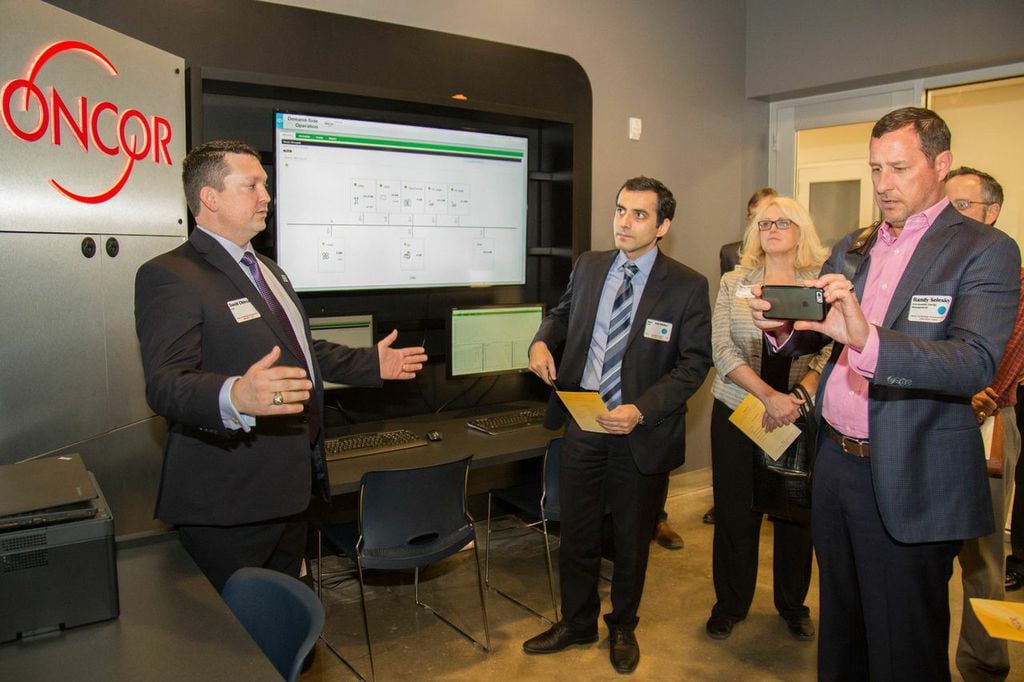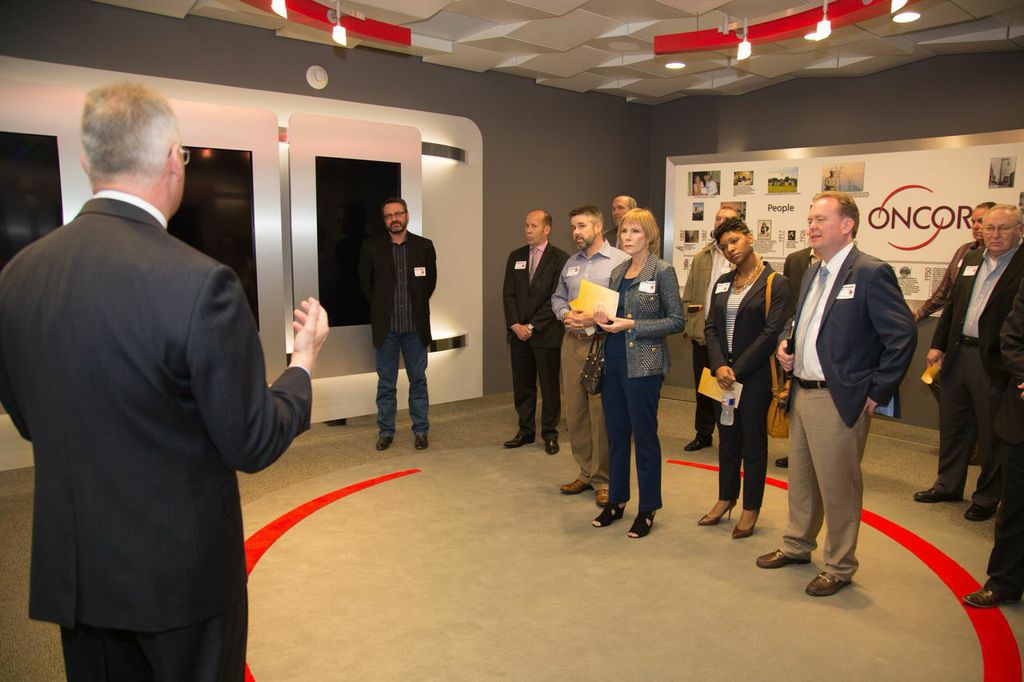
The terminology might seem diminutive, but there is no doubt that the future for microgrids is anything but small.
In fact, in future, microgrids themselves won’t necessarily be that small physically in their own right either. Misconceptions about the isolation of microgrids also abound.
They don’t have to work in full isolation, they may in fact be made up of several small grids and via the legacy grid, they may well be connected in the future to series of similar microgrids. It’s not easy to find a catch-all term that encompasses all of these characteristics. So with the objective of scaling up the benefits of microgrids to larger and larger systems, is the name misleading?
“Possibly, yes,” says Troy Miller, director of grid solutions at S&C Electric. “We’ve got some exciting projects in the pipeline that are much larger. People have used the term microgrid generically to mean a system, whatever the size, that can be separated from, islanded from. The overall larger grid is measured in GWs and TWs, microgrids can be tens or hundreds of MW. I haven’t heard a name for them as they get bigger but people have coined new terms for them as they got smaller, nano- grids and pico-grids.”
Try Premium for just $1
- Full premium access for the first month at only $1
- Converts to an annual rate after 30 days unless cancelled
- Cancel anytime during the trial period
Premium Benefits
- Expert industry analysis and interviews
- Digital access to PV Tech Power journal
- Exclusive event discounts
Or get the full Premium subscription right away
Or continue reading this article for free
S&C played a key role in the development of an ambitious micro-grid project completed in 2015 for the Texas utility firm Oncor. The site is part of a large Oncor testing facility that had been operating with diesel back-up. The motivation for the project was two-fold, one financial and one strategic.
“They originally wanted to build a microgrid from the ground up, greenfield, with all new sources of generation. To save on some of the capex they decided to integrate the existing generation assets. So they hired S&C to create a dynamic microgrid to combine the sources they had on-site with some newer assets, a microturbine, some battery storage as well as PV,” explains Miller. “It was a fairly complex problem. They were looking to reduce the amount of energy they used and use the most energy efficient sources first, the PV, followed by the energy storage, followed by the microturbine and lastly the diesel, to reduce their need for additional generation. Then they were trying to match the critical loads with the available and existing generation.”
The initial plan was to incorporate all of these components into one, singular microgrid. As is often the case, the plan needed to change was the work began.
“Because of the different ages of the diesel generation on site, what we ended up doing was creating four separate zones within the microgrid,” explains Miller. “One zone with two existing gens, another with two further existing diesel generators, a zone with a community energy storage battery and the last with the gas turbine, some PV and a slightly larger battery.
“The main reason was that if you tried to bring all these online at the same time, specifically the two different sources of diesel generation they would resonate, they were operating at different frequencies, and this would create very strong power quality issues. So we had to come up with a very creative way to eliminate that, which was to have these four microgrid zones within the larger microgrid.”
The technical challenges did not end there. S&C designed and built a custom grounding transformer to ensure the system had a different ground-reference depending on whether it was connected to the main grid or was operating in islanded mode.
“This custom transformer allowed all those newer sources of generation to operate, even in an islanded mode. What we’re basically saying is that you have to come up with some creative solutions to overcome the limitations of existing sources of generation,” says Miller.
Show and tell
The second motivation Oncor, S&C and project partner Schneider Electric was to have an operational demonstration of what battery storage, some sophisticated controls and clever design can achieve. Storage suffers from the same inertia in reputation that still plagues solar PV. There is a misconception that because the technology has not bottomed out its cost reductions that it must be in some way unaffordable, that significant gains are required before it is worthy of mainstream attention. Energy storage is of course a technology for the here and now and is already solving a variety of problems on the grid – without handouts.
Oncor went one step further than building a microgrid as a demonstration of this fact. With lobbying, and selling, in mind, the site in Lancaster, Texas, also includes visitor suite.
“The interesting thing about the Oncor facility is that they have built a fully interactive customer centre where people can experience the microgrid. The idea is to bring in legislators, regulators, other customers and their end customers to be able to show them this new form of generation. Part of the idea was to get regulators in Texas comfortable with the fact that utilities could own energy storage and microgrids. Encor is what is called a wires company, they are forbidden from owning any type of generation and because of an antiquated regulation, energy storage is classified as generation when really it is neither load or generation, its kind of in the middle.”
So the facility is in a way, helping to re-write the rulebook at a time when regulations are a significant obstruction to energy storage projects.
“Yes and we are. It is helping to demonstrate that and we are working very hard on regulatory approval both in ERCOT as well as PJM, CaISO, the MidWest ISO and the rest,” says Miller adding that walking the talk is also crucial.
“I think that is helping but energy storage is solving real problems. we installed a system at the village of Minster, a municipality in Ohio. they had an existing 4.5MW PV plant and S&C and half Moon ventures put in a 7MW/3MWh energy storage system that does three simultaneous things,” he says. The system participates in the frequency response market, helps the village avoid peak lod contribution charges and corrected the towns power factor using the battery, negating the need to purchase power factor correction capacitors.
Miller also points to the contribution storage is making to California’s response to the Aliso Canyon gas leak.
“It can get sited a lot quicker, it can get built a lot quicker and it is taking care of a problem, basically supplementing production on the peak days next summer, that would have taken three to four years to [to solve by] building traditional generation. There’s other specific examples too of energy storage solving problems that can’t be done with traditional forms of upgrades or traditional upgrades of distribution,” says Miller.

The glue
Microgrids can serve several purposes, just like energy storage can in its own right. With more than 200MWh of storage deployed and proven microgrid pedigree, S&C is well-placed to comment on where they can fit into the existing infrastructure.
“We’re very bullish on microgrids and we think they are going to be a big part of the utility of the future, combining alternate sources of generation, intelligent switching and protection, a microgrid controller and energy storage to form the backbone of an islanded microgrid. We believe utilities will see more and more of these being installed and the utility will serve as the coordinator of the microgrid, or the grid of microgrids,” says Miller.
If microgrids are themselves a patchwork, and the architecture of the future grid is likely to include a number of microgrids, a lot of challenges will lie around interoperability, frequency matching and finding a common tongue for all these disparate assets to communicate in. At the heart of this future is energy storage, the great enabler.
This article originally appeared in “The Global Energy Storage Opportunity”, a free resource availble to download here.
